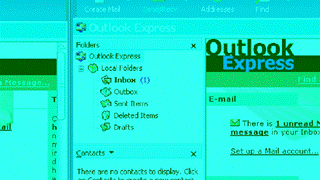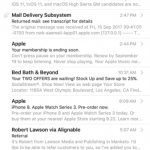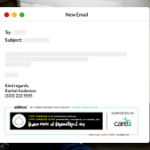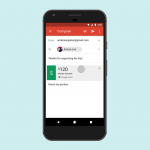How electronic mail turned into probably the most Reviled communique expertise Ever
e mail wasn’t at all times a supply of concern and loathing. What took place? And what do we do about it—actually?
June 15, 2015
It wasn’t except I heard that a colleague had nuked his non-public e mail account—on objective, for good—that it hit me: e-mail is the most reviled non-public technology ever. Mat Honan, the San Francisco bureau chief at BuzzFeed, was so uninterested with electronic mail that he did the twenty first-century an identical of unlisting his cellphone number and ripping the wire out of the wall. (He could not do the same at work, however i suspect he wished to.) This abject fear and loathing of a telecommunications expertise, and the novel step Honan took to flee it—not mitigate, not reframe, no longer “restore,” however get away—received me curious about how we bought up to now. What are the true, fundamental design flaws—if any—with electronic mail? What makes it the sort of big target for “fixing,” but so immune to it?
The Design of everyday issues, Run Amok
I began by means of reaching out to Don Norman, the famous interplay design knowledgeable and author of the basic handbook The Design of on a regular basis issues. email is solely as “on a regular basis” as espresso pots and doorknobs, however most people do not fantasize about throwing their espresso desktop right into a black hole or sawing the knobs off all their doorways. Norman himself has no love for e mail: “the problem is in trying to make e-mail do the whole lot when it’s no longer particularly good at anything else,” he says. To Norman, even reputedly time-honored options like Gmail’s threaded conversations—which first brought order to unruly inboxes 15 years in the past—are simply crude Band-Aids that do not deal with the illness (and lead to issues of their own). “Gmail conversations are horrible,” he says. “folks all the time reply to the incorrect subject, and as the dialogue continues it strikes off matter, so the thread becomes unnecessary. it can be the unsuitable mechanism, badly achieved.”

what is the various? “I. do not. recognize,” Norman says, hitting every syllable with bemused resignation. e mail, he says, occupies a vast no man’s land between synchronous textual content messaging (like SMS and IM) and offline word processing, a territory that affords “creating an argument” but additionally creates a context where attention goes to die. “it is the workplace memo turned cancerous, prolonged to home and everyday lifestyles,” he says.
Justin Rosenstein, co-founder and product chief at Asana—which bills itself as “teamwork with out email”—is of the same opinion, evaluating electronic mail’s fundamental experience design to that of paper faxes. “When it’s easy [as an incoming fax], email’s tremendous,” he says. “it is a regular protocol; it’s a legacy know-how that’s very well understood.” but what should you had been expected to make use of the fax like a telephone—ready by the desktop, scrawling out replies through hand, like Al Pacino and Russell Crowe in The Insider? The messages would quick pile up, of course. you would be doing nothing but faxing, all day, every day. The few important paperwork or memoranda that did come thru would be buried in the blizzard, and for those who did surface them, you would be too wired managing the relentless volume to reply meaningfully.
that is what e mail has turn into for most people: a faster, cheaper fax machine (with the entire attendant forms-processing overhead), but used like a telephone (with all the potential for regular interruption). And it lives in our pockets.

a short historical past Of The Worst thing Ever
electronic mail started out, Norman says, in the early 1970s as “a roughly hack” between scientists and engineers employed by using DARPA, the U.S. defense division’s R&D division. The precursor to the internet, referred to as the ARPANET, linked DARPA’s more than a few computer networks scattered across the us of a. Sending messages along for the ride made feel. “It was basically programmers looking to make their lives more uncomplicated,” Norman says. They couldn’t think about that the elemental messaging protocols they have been baking into the very substance of the web would, within a number of decades, be groaning under the load of a whole bunch of billions of emails per day.
however after they obtained it, everyone knew e-mail was a sport changer. When former Intel CEO Andrew Grove’s 1983 bestseller excessive Output administration was once reprinted in 1995, Grove included a different introduction largely devoted to the influence of electronic mail. “He basically stated, ‘the whole lot i’m telling you on this e book continues to be genuine, but let me inform you about this loopy factor called e mail, which is going to revolutionize the whole thing,'” says Stewart Butterfield, co-founder of Slack, any other business-messaging app designed to switch e mail within companies. “if you had been the primary company on your business to have e-mail and no one else did, you might kill every person of your rivals.”

The ’90s additionally noticed the upward push of the around the world web, which made hypertext paperwork and e mail—formerly the domain of the defense force, academe, and unusually prescient companies—go mainstream. if you were “on-line” (perhaps with a kind of to hand AOL CD-ROMs?), you needed to have an email address. It was like being listed within the telephone e book, however with the personalised cachet of a ham-radio handle. If email was destined to transform “the place of business memo turned cancerous,” to make use of Don Norman’s quip, then this used to be its first critical metastasis.
The second arguably sprouted in 2003, when a Canadian telecom difficulty called analysis In movement released its first BlackBerry smartphone with “push email” performance. Now, instead of being confined to a “mailbox” that lived inside the beige field to your desk, electronic mail may practice you around and faucet you on the shoulder each time it needed. For docs, lawyers, politicians, media bigwigs, and their fortify team of workers—any individual who was accustomed to being “on call,” “necessary,” or each—this e mail-mediated always-on-ness was a more or less standing symbol. (remember that the time period “Crackberry“?) Then the iPhone hit in 2007, and we all needed in.
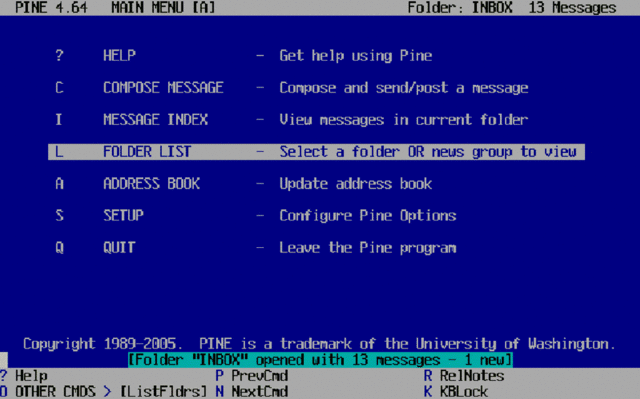
The Psychology of e mail
Which brings us to the weird love-hate dynamic everyone appears to have with e mail. we have let it seep into each nook and cranny of our lives, and we resent its presence. but we additionally crave it. I asked psychologist Larry Rosen, who focuses on studying our evolving psychological relationship with know-how: What the hell is up with this?
“e-mail has transform an manner-keep away from warfare for us,” Rosen says. “we know there could be a gem in [our inbox] somewhere right now, but we now have to sift through all the crap to search out it.” Rosen explains that the accessibility of email and its unpredictable pleasures stimulate our mind’s “in quest of” circuits. These circuits are mediated via the neurotransmitter dopamine, which helps the mind assign incentive salience to stimuli that may present a reward.
In different phrases, we may just despise our inboxes (and ninety nine% of what’s in them), but we’re neurochemically compelled to make sure that there is not one thing probably essential or pleasurable lurking in there this time. and then 5 minutes from now. And however. And once more. “the inner stimulus is the one who will get you,” Rosen says. “On balance, [email is] possibly 10% pleasure and ninety% concern of lacking out.”

fixing e mail: what is the real problem?
As Aza Raskin has written here, fixing intractable design problems manner reframing them so that they grow to be tractable. So what is the problem with e-mail, in reality?
1. consideration
modern attempts to care for email head-on do not try to boil the ocean of incoming messages. as an alternative, they accept it as a given, and instead try to aid or automate our hapless, dopamine-pushed efforts to “process” it. Gmail Inbox and Mailbox take this stance. With quick gestures, snooze buttons, and sensible labels, they are trying to cut back the cognitive load of sorting the email wheat from the chaff. the trouble, Rosen says, is that “the triage is a never-ending process. it’s a must to repeatedly attend to it, or just let your e mail pile up and say, ‘Eh, if i leave out one thing right here and it’s important, they may get involved with me every other manner.'”

2. Scope
Most electronic mail is figure-related, because of its ARPANET origins and memorandum-like format. however e-mail on the job has too many jobs: undertaking administration, to-do lists, crew discussions, file switch, file modifying—it’s never-ending. “e-mail is so time-honored, it’s now not specialised,” Asana’s Rosenstein says. “We’re the usage of email for issues that it intrinsically sucks at.” Asana and Slack purpose to lighten your inbox through offloading as many “issues email sucks at” as conceivable. Slack replaces interoffice mail and staff message threads; Asana replaces crew status-tracking and mission management messages. The intention is to “box in” electronic mail to the duties handiest it (and not some nimbler, newer tech) can do well. That basically approach any roughly exterior communications, which continues to be lots. “I spend 4 or 5 hours a day on electronic mail,” admits Slack’s Butterfield. “Its advantage is that it crosses organizational boundaries, it can be the bottom standard denominator, it can be the lingua franca of pc-mediated verbal exchange. it’s how we set up this conversation.”
3. Us
“email is superb! persons are damaged,” writer and programmer Paul Ford tells me (via e-mail, natch). “if you inform me you hate electronic mail,” he asserts, “then you might be telling me you wouldn’t have control over your own lifestyles. a variety of instances you do not; and nobody has whole control over each side of their existence. but on some degree it is on us.” The technique to this drawback isn’t one of design, expertise, or even psychology, he says: it can be primarily philosophical, nearly existential. How do you wish to have to reside? What matters? the place do you need to position your attention, day by day and second via second? and the way does email support or degrade that? name it the that is Water approach (to quote David Foster Wallace’s famously succinct how-to information for residing a meaningful existence). it can be heavy and it’ll include important social penalties, however it works. simply ask Neil Stephenson. Or Mat Honan, for that subject. (i tried to agenda an interview with him for this text by means of telephone, SMS, Twitter, and even e-mail, but come what may we nonetheless weren’t in a position to attach.)
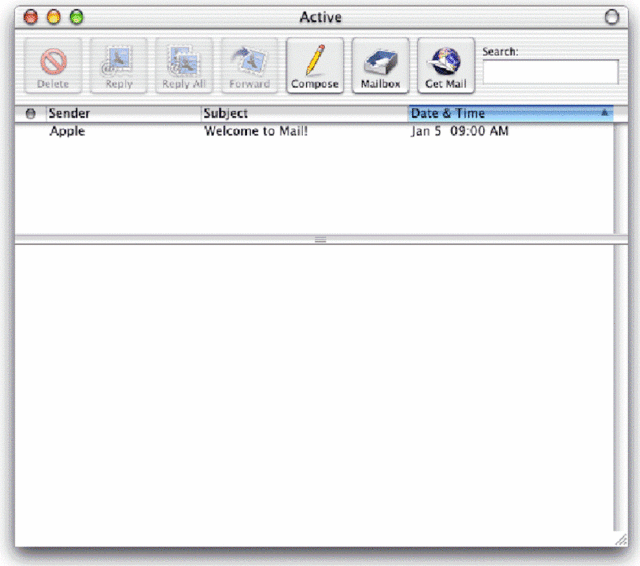
solutions
electronic mail is not going away. “maybe by means of 2080,” Slack’s Butterfield jokes. “it’s acquired many years left at least.” The dangerous information is that, because e-mail is so ubiquitous, fool-proof, and just undeniable useful, there will by no means be a “solution” for its shortcomings within the basic case: no longer design-smart, now not tech-wise, now not socially, culturally, organizationally, psychologically, ergonomically or biologically. e mail is simply too many things to too many people, all of sudden, in every single place—and as Don Norman says, “technology hardly ever goes away.” we will not roll again what electronic mail has change into.
the excellent news is that your e mail “downside”—distinctive to you and your experience—is probably solvable, if simplest as a result of, as Paul Ford observes, programmers will never, ever cease seeking to rethink, refactor, re-engineer, or just simple re-do electronic mail. furthermore, the dearth of universal, secure electronic mail norms way that you’ve a semblance of cover for adopting virtually any stance you need toward your personal email. Hell, if a outstanding tech journalist like BuzzFeed‘s Honan can hit the ejector seat on email and get away with it, you’ve gotten got a whole lot of room to maneuver.
perhaps one of the best method to the issue of e mail comes from that saint of verbal exchange design, Charles Eames. and that’s to design electronic mail anew every time you do it. i do not mean that you simply should actually pull out a sketchpad and start rethinking the gadget every time you open your inbox. I mean undertake the fashion designer’s stance, which, consistent with Eames, is basically “one way of motion”: deal with yourself to the need at hand; “recognize as some of the constraints as imaginable”; and have a “willingness and enthusiasm for working inside these constraints.” In different words, take into accout. forget “fixing” what email “must” be for, or about. what’s it for, or about, for you, right here, right now?
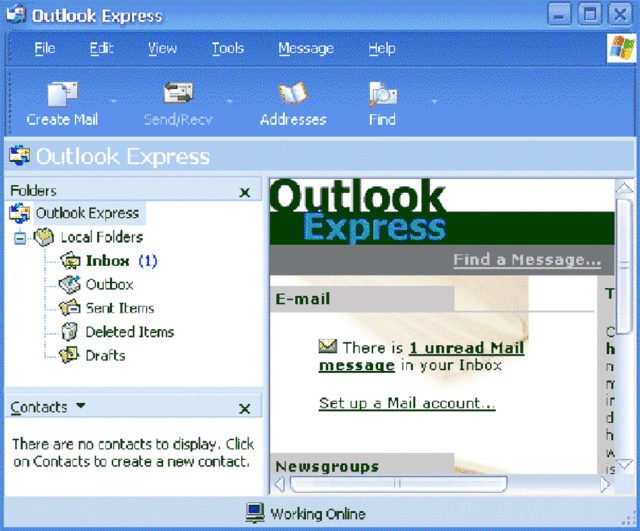
perhaps it is about respecting your recipient’s time. maybe it can be about inviting genuine connection. possibly it is about ensuring you do not omit that thing you are anxiously waiting for. possibly it is about sustaining the general public record (or no longer). maybe it can be about bookmarking. Or self-lend a hand. Or educating your self something. Or paying someone.
here is what makes e-mail the most reviled expertise ever, Stewart Butterfield says: “there is one thousand million fucking issues you need to do in your life, and email is the distillation of the different stuff that other folks want you to do.” So possibly the way to e mail is solely what Paul Ford said: taking, if now not full control of our lives, then at least fuller accountability for them. no longer passing the buck (which, not coincidentally, is something that e-mail is great at enabling). If design is not about options as much as it is, as Eames said, “an expression of purpose… one way of motion,” then possibly the question any dressmaker concerned with e mail will have to ask will not be “What can we do about it?” but relatively: “what’s going to I do with (or without) it?”
and then possibly things can also be different at this time, now not simply in 2080.
[e-mail shopper Screenshots: by means of GUIdebook.org]
fast company , read Full Story
(163)

